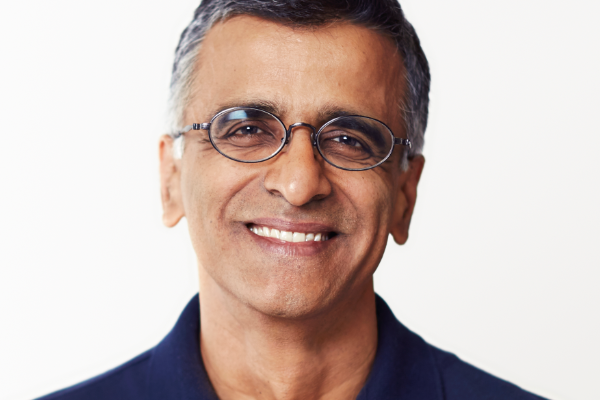There’s a company in California, well-financed and growing, working busily on a business that at first glance is doomed.
Neeva is a subscription search engine. They want you to pay $5-$10 USD a month to use a service that at the moment we treat like air.
I spoke to co-founder CEO Sridhar Ramaswamy about his counterintuitive startup, and I’ve written about it for The Spinoff. I didn’t get the chance in that piece to explore the implications for news.
Ramaswamy seemed to me to be a brave and methodical guy, and as I spoke to him I became less skeptical about Neeva. The reasoning is solid, even if the odds are long.
Neeva is relevant to news in two ways:
- The impetus for Neeva comes from Ramaswamy’s perception that in an ad-supported search model, the interests of the users and the paying clients will always be mis-aligned. That misalignment will over time erode the product experience. This insight also applies to ad-supported news.
- Content integration into the search interface is a much bigger part of Neeva than, for example, Google search. That means that in future big chunks of news may appear right there on your Neeva home page.
Ramaswamy saw advertising’s product-damaging influence first-hand when he was head of ad-tech at Google. He’s a balanced guy, and doesn’t condemn advertising per se: he just points out that it’s probably impossible to champion the user over years when it’s the advertisers paying the bills. The only way to do the product properly is to get your revenue direct from those who are using it.
Where Ramaswamy becomes more strident is in his denunciation of tracking. The former head of ad-tech at Google – the giant making more than $100 billion a year from targeted advertising – describes tracking as “creepy” and “pernicious”. To be fair to Ramaswamy, in accounts of his time at Google it seems he was often involved in defending the product over squeezing a few more billion out of the market.
Neeva in the wild
I’ve signed up and used Neeva’s product in pre-release.
“You are not the product” is the default text displayed inside the search dialogue box at the top of the page. I found that the search engine serves large amounts of content within its own interface. For example, if you search for a recipe, the ingredients and method are displayed in full on the side of the page. You don’t need to click through.
I questioned Ramaswamy on what could clearly be copyright infringement on some of the indexed content. He says Neeva will do revenue sharing deals with content creators.
“A customer-paid search engine has a much more direct relationship with its publishers. Supporting quality content is part of the broad mandate that we set for ourselves.”
“You’ve talked about the kind of content that we use that goes beyond fair use. As we roll out subscriptions, I want to make sure we have a revenue-sharing program so that whenever that happens, there’s actually an algorithm that apportions value to it.”
As with Google, there is a dedicated News tab within Neeva, and they have focussed on allowing the user to select news preferences from sources. Snippets at the moment are restricted to the headline, thumbnail and two lines of the article.
Ads only work for the biggest platforms
When I ask about the saga of the News Media Bargaining Code in Australia, Ramaswamy takes a line beneficial to his company: that Facebook and Googles’ threats to withdraw from the market showed just how important it was that “companies that are for all intents and purposes utilities” have viable competitors.
“I think the fact that news companies feel unsupported by these large tech platforms is mostly a consequence of the failure of the ads model to be a viable proposition for all but the top three or four companies.”
“The fact of the matter is that the ads model has benefited a Facebook, Google, an Amazon, maybe a Bing, and no one else … Many publishers bet heavily on the ads model without realising they would not be particularly successful with it.”
Pro-subscription movement
Neeva is part of the years-long wider movement away from advertising and towards subscription.
In a digital world, the pressure that turns “advertising-supported businesses” into plain old “advertising businesses” is omnipresent. Anyone who has worked in ad-supported digital news – as I have over decades – will be all too familiar with the pressure to approve new ad units. It’s hard to so no when your sales team is struggling, you really need the money, and the page is already a dog’s breakfast.
That pressure inclines content-based businesses toward subscriptions, with their allegedly perfect alignment, but there are drawbacks.
A big one is “subscription fatigue”, the increasing reluctance of audiences to charge one more service to their credit cards as subscription businesses proliferate.
“It’s a concern that we have,” says Ramaswamy. “But unlike an occasional newsletter that I read, we feel that an activity I perform a dozen times a day rises to the top.”
Could it be that subscriptions, like advertising, will end up being a game that only a few can be really good at? Ramaswamy doesn’t go down that path, but he does make an interesting reference to “bundling or unbundling”. Could it be that there is a business in gathering together a whole lot of editorial subscriptions and offering a package?
Sounds like it’s back to the future all over again.

